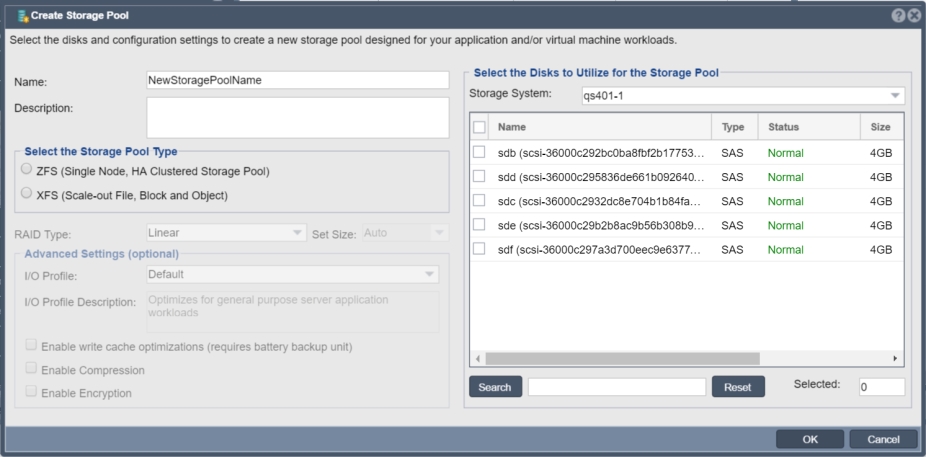Create Storage Pool
A storage pool is a combination of one or more disks combined together into a flexible abstract layer from which you can provision both storage volumes (LUNs) and network shares. Storage pools have support for software RAID but it is often best to create a fault-tolerant hardware RAID unit first then use the storage pool software RAID layer only for striping to combine disks/units together. ZFS based storage pools have the advantage that you can expand them by adding more storage to them at any time. You cannot remove disks from a storage pool so be careful what you add to the pool later using the 'Grow Storage Pool' dialog.
Selecting the RAID Type
Generally speaking it is best to use hardware RAID to make fault-tolerant logical disks first then use the storage pool software RAID capabilities to combine disks using RAID0 or Linear. That said you can use software RAID for everything. Note that RAID6 can sustain two disk failures and has performance characteristics that are similar to RAID5 so it is always preferable to RAID5.
Selecting Disks
If you're selecting multiple disks be sure to select disks of the same size. If you combine disks of different sizes then the lowest common denominator will be used. For example, if you have 4 disks of differing sizes such as 1TB, 2TB, 3TB and 4TB combined together using RAID0, you will have only 4TB usable. The same disks combined using RAID5 would have only 3TB usable.
It is also recommended that you use disks all from the same manufacturer rather than mixing drives which may have different performance characteristics.
Selecting an I/O Profile
IO profiles allow you to adjust some settings like block size and read-ahead amounts for the storage pool to tune the pool for specific workloads.
Write Cache Optimizations
Enable this if you have a hardware RAID controller with a flash cache or battery backup unit which protects the write cache in the controller.
Compression
Only the ZFS storage pool type supports compression. In general compression uses very little CPU power and will boost performance as it can greatly reduce the amount of data written and read from disk. Typical performance increases from enabling compression is 10%.
Search/Reset Buttons
You may refine the Volumes displayed by entering search criteria and pressing Search button to reduce the volumes displayed. Multiple comma separated values may be used to further refine the volumes displayed. To see all the volumes press the Reset button.
